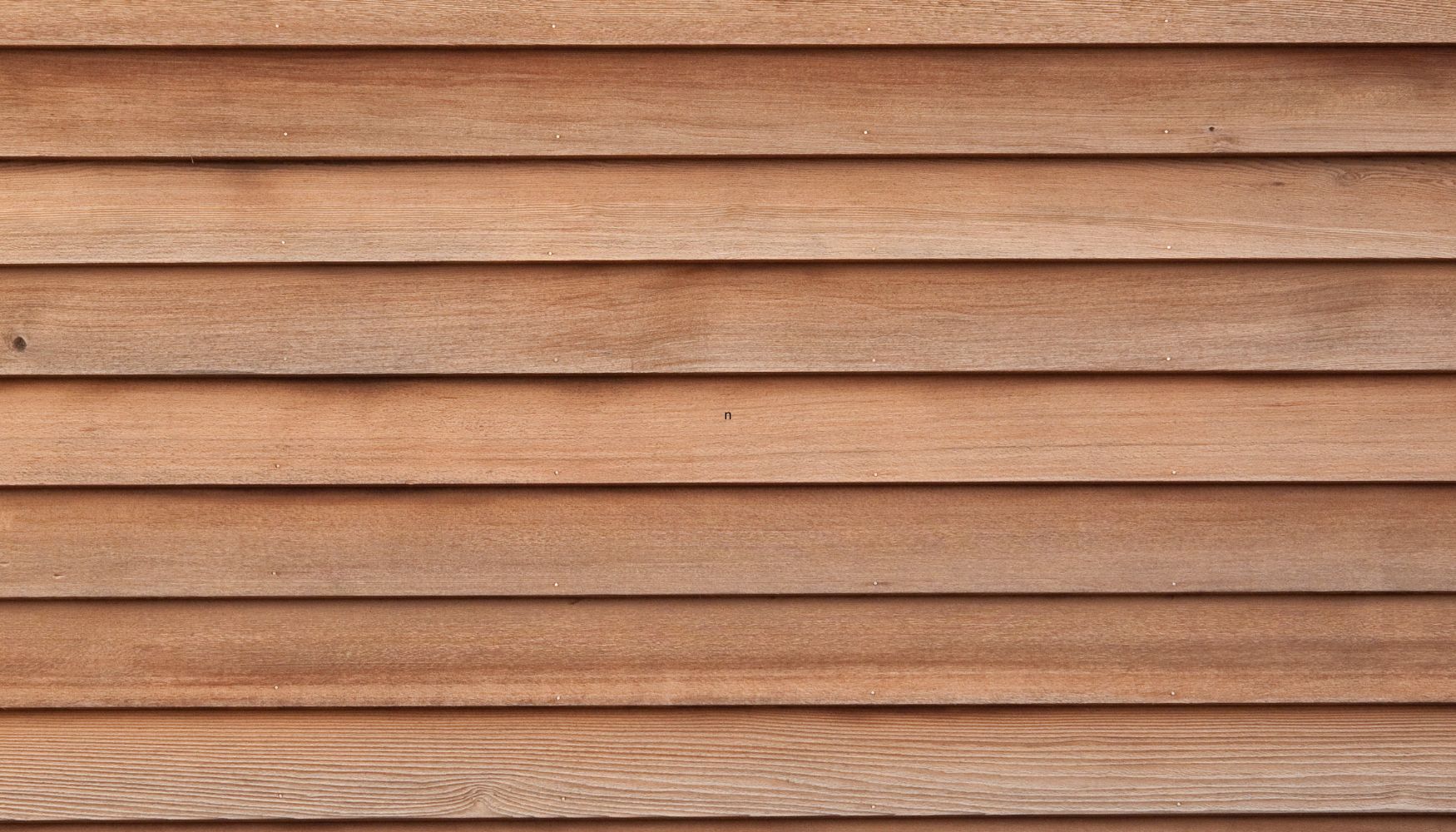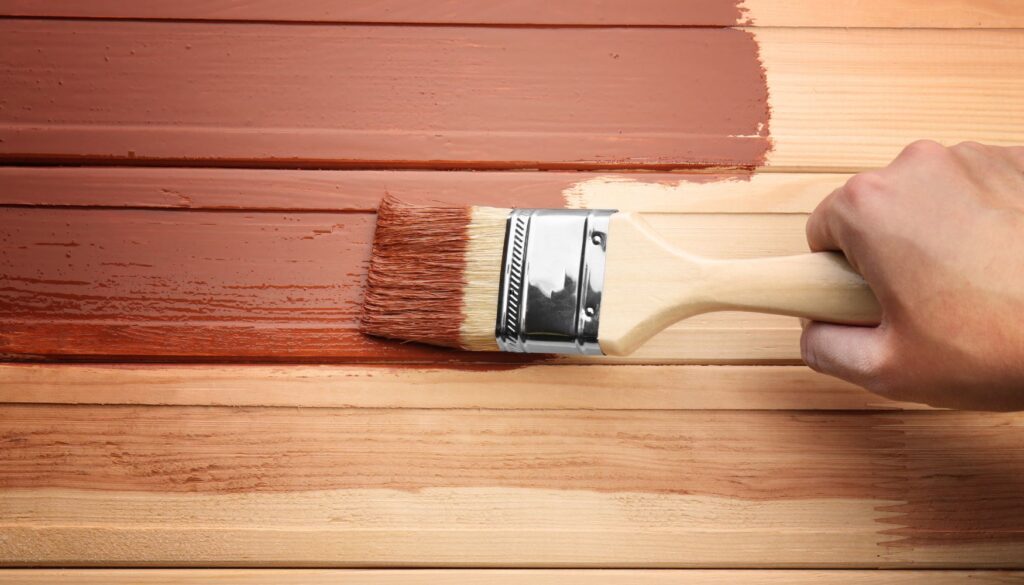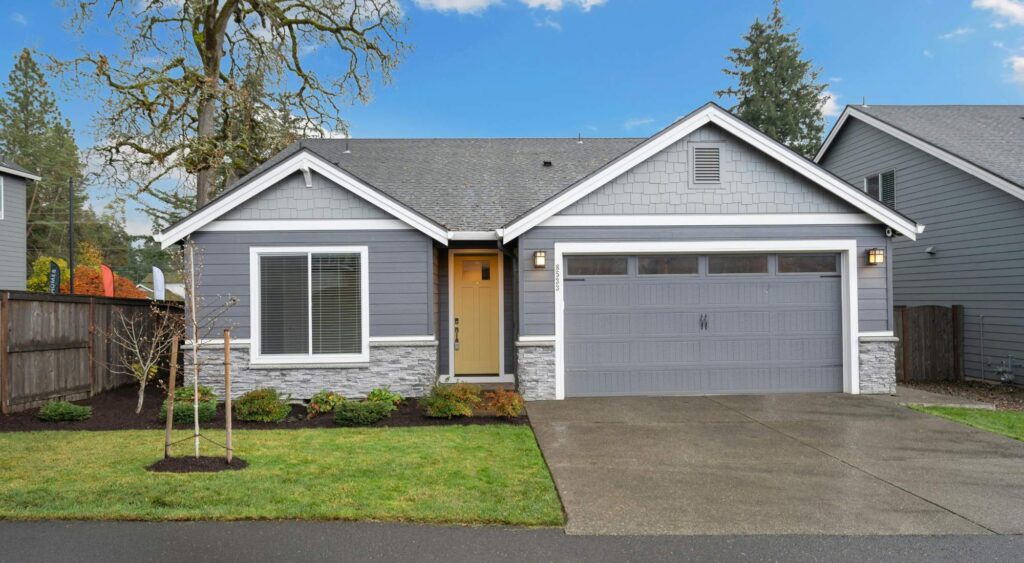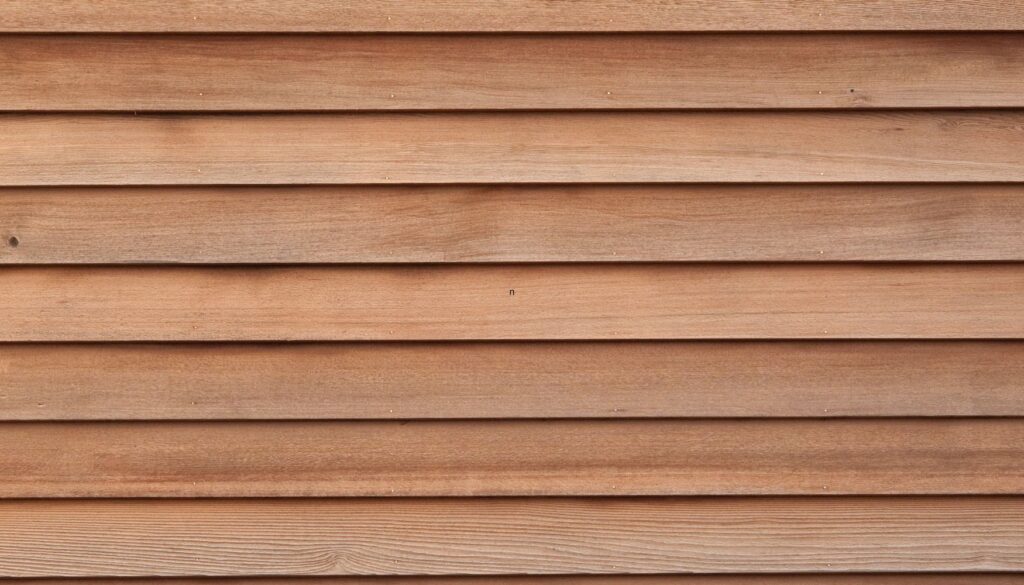You pull into your driveway. Boy, it was a long day at work.
You notice the fading and uneven splotches of stain on your house’s cedar wood siding for the first time in a while.
You frown and wonder when the last time that was redone. Not since you bought the house, that’s for sure.
Well, we’re here with a step-by-step guide to painting your cedar siding without all the confusion, wasted time, and effort. We’ll show you why you should paint your cedar siding, the pros and cons of painting vs. staining, give you the steps to tackling the job yourself, and discuss when to call the pros.
Table of Contents
- Can You Paint Cedar Wood Siding?
- What Kind of Paint Do You Use On Cedar Wood Siding?
- Staining vs. Painting Cedar Wood Siding
- 6 Steps for Painting Cedar Wood Siding
- FAQs About Painting Cedar Wood
- Two Brothers Painting: Top-Ranked Oregon Painters Offering Exterior Cedar Wood Painting and More
Can You Paint Cedar Wood Siding?
After some pondering, you decide you want to paint your exterior a rich, dark blue. But can you even paint cedar wood siding?
Yes, you can. Many homeowners feel that exterior paint would look better and fit their style more than a stain. Stain colors are limited, while exterior paint comes in every shade you can think of.
However, to get the colored, even-coated look you want, there is some prep work involved. This includes things like cleaning off mildew, dirt, and the occasional bug, scraping off any peeling or cracked paint, and sanding down the rough spots.
Choosing the right paint and primer is crucial to a successful job that will last for years to come. When an exterior paint job is done correctly and maintained properly, it can last for 30 years. A study done at a lab in Madison, Wisconsin, prepared a piece of cedar wood siding covering all six sides with an oil-based primer and two coats of acrylic-based exterior paint. It lasted for 30 years with virtually no damage.
What Kind of Paint Do You Use On Cedar Wood Siding?
100% acrylic-based paint is the best exterior paint for wood siding. It’s thick, weatherproof, and can thoroughly cover the wood, hiding any imperfections.
These paint formulations are also highly flexible to expand and contract depending on your weather, which helps prevent peeling and cracking. They offer better color retention than other paint types, too.
But first, don’t skip the priming! It’s essential that you first cover all sides and edges of your siding with an oil-based or stain-blocking primer. Never use a latex-based primer because water can seep into the wood, causing peeling and cracking.
Staining vs. Painting Cedar Wood Siding
While researching online about painting cedar wood siding, you’ll find varying opinions about whether staining vs. painting is better.
Below is a list of pros and cons to help you decide what’s right for your home.
Painting Cedar Siding
Pros:
- Can last up to 10 years if high-quality primer and paint are used and applied properly
- Hides surface imperfections
- Comes in an impressive variety of colors and glosses
- Provides complete protection from moisture, pets, and UV rays
Cons:
- Forms a surface layer that can crack and peel over time — especially if not prepped properly
- Takes more work to apply — peeling paint must be completely removed before repainting
- Loses the natural look under a thick, opaque film
Staining Cedar Siding:
Pros:
- Penetrates the wood, which allows the natural look to come through
- Fades instead of cracking or peeling, and can be easily restained
- Quicker and less intensive to refresh
Cons:
- Far fewer color options, especially for semi-transparent stains
- Offers less protection against harsh weather
- Requires more frequent upkeep — semi-transparent stains usually need re-coating every 3–5 years, solid stains every 7–8 years
- Solid stains can look like paint, but don’t offer the other benefits
6 Steps for Painting Cedar Wood Siding
#1: Clean Properly
It’s all about the preparation process.
The very first thing to do is to properly clean the siding. You will want to wash away any mildew, mold, dirt, and those pesky spiderwebs. Using a power washer on a low-stream setting can do the trick. Any higher setting can damage the cedar and cause issues like gouging holes or lines into the surface.
#2: Remove Old Paint
Since you’ll want a completely clean surface to work with, you’ll need to remove any remaining paint from your siding. Power washing may remove the cracked or peeling sections, but be prepared to scrape the majority off by hand.
You’ll need a scraping tool with a sharp edge that fits comfortably for the size of the wood planking. You don’t want one that’s much larger than the siding, as it will be difficult to hold. And one that’s too small will cause extra work.
#3: Sand the Surface
Sanding the wood smooth allows the paint to stick better to the siding. While the paint can fill in imperfections, many homeowners prefer to sand away any rough spots before painting.
For removing old paint or smoothing out rough patches, you’ll need coarse grit sandpaper (60–80 grit).
Afterward, move to a medium grit sandpaper (100–120) to smooth it further.
Finish with a fine-grit sandpaper (120–150) before you prime. This will give the wood a smooth, polished surface.
#4: Apply Primer
Choosing the correct primer is as important as choosing your paint. You’ll need to use an oil-based or stain-blocking primer. These are specifically formulated to adhere to softwood siding like cedar. They prevent discoloration and ensure the paint sticks well.
Make sure to prime all sides, including the back and end edges. This will further prevent moisture from getting in and causing the natural chemicals (tannins) in the cedar to show through, particularly on the edges, where it’s most common.
Hand brushing is the best way to ensure that the entire piece of cedar wood siding is completely covered and protected. This is especially important when working on the back and end edges of the wood. Applying the primer with a long-bristled manual brush ensures a consistent, thick coating across the entire piece. This significantly lowers the risk of peeling and cracking, especially in harsher weather.
You also need to make sure you prime new cedar within two weeks of installation. Sun-exposed untreated cedar won’t hold the primer or paint like fresh, unweathered cedar, and two weeks is all it takes to weather the wood.
#5: Apply Paint
Always use an acrylic or water-based exterior paint, and apply it by hand as you did with the primer. You shouldn’t use a paint roller or spray for this, as it won’t give a thorough and consistent finished look.
The two-coat system is the best at protecting your cedar from moisture damage and peeling, cracking paint.
The process involves one layer of primer covered by two top coats of paint. It’s been proven to provide longer-lasting benefits than just a single topcoat.
Brush it on liberally, ensuring that it’s covered uniformly — including any knots or rough spots — and with no thinly coated sections.
#6: Ensure Proper Maintenance
Taking care of your painted cedar siding is key to keeping it looking fresh and clean. If prepared and applied correctly, it will typically be 8–10 years before you’ll need to repaint.
The best way to ensure that your painted siding looks its best is to spend the time properly preparing the wood beforehand. It’s also important to regularly inspect your cedar siding for gaps and to see if caulking or repainting is needed.
FAQs About Painting Cedar Wood
Is It Better To Paint Cedar Wood Myself or Hire a Professional?
While painting your cedar wood siding is definitely doable, it probably shouldn’t be attempted by someone new to DIYing, who isn’t comfortable trying it, or who can’t finish in the time required.
If you aren’t up to doing it yourself, it might be better to hire someone to take care of it for you. Two Brothers Painting is a top-rated, expert-owned and operated team of painting contractors in Portland who will give you beautifully painted cedar wood siding that will last for years to come.
What Are the Benefits of Painting Cedar Wood?
Here are five reasons you should consider painting your exterior wood siding:
- Can enhance its natural resistance to termites, carpenter ants, moisture, decay, rot, and fungus
- Lasts longer than staining when maintained properly
- Is weather resistant
- Keeps its color well
- May add to the house’s curb appeal
Will Cedar Paint Peel or Crack Over Time?
Yes, when the boards aren’t prepared properly, poor quality or incorrect primers and paints are used, and if moisture gets behind the paint, painted cedar siding may crack and peel.
This can also happen if the cedar wood isn’t completely dry or free of sanding dust. As it ages and degrades or is neglected and not maintained properly, it will peel and crack even more quickly, lasting only a few years instead of the 10 years expected of most painted wooden siding.
Two Brothers Painting: Top-Ranked Oregon Painters Offering Exterior Cedar Wood Painting and More
If you want your newly installed cedar wood siding painted or are simply looking for a refresh, give Two Brothers Painting a call for a quick quote. With over 150 years of combined painting experience, we can tackle any exterior cedar wood siding project you have and do it fast, efficiently, and at the best price.





